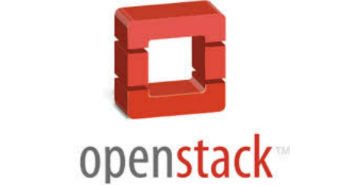The StarlingX OpenStack project, launched on May 21, 2018, was created to address the need for an open source software platform that enables telco-grade applications and services to be deployed at the network edge. It will comprise value-added services that enable highly reliable applications and services to be deployed at the network edge.
In the telecom market, communications service providers (CSPs) worldwide are increasingly viewing applications hosted at the network edge as compelling business opportunities. While revenue from traditional broadband and voice services is essentially flat, edge applications present opportunities to sell new kinds of services to new kinds of customers. This trend provides the potential for increased market penetration, as well as improved average revenue per user for those CSPs who can be early to market with attractive offerings.
Telecom applications generating widespread interest
Some examples of telecom-oriented edge-hosted applications and functions that are generating wide interest are MEC (includes video caching, AR/VR, retail and more), uCPE, vCPE, and vRAN. For example, by bringing content and applications to mini-data centers in the radio access network (RAN), MEC allows service providers to introduce new types of services that are unachievable with cloud-hosted architectures because of latency or bandwidth constraints. The service provider opportunity is to enable new services directly at the point of the consumer at location-based, high-density venues such as stadium events and shopping malls.
Applicable to both enterprise and residential scenarios, uCPE and vCPE deployments replace physical hardware appliances, traditionally located at the customer premises, that provide connectivity, security, and other functions. By deploying general-purpose compute platforms based on industry-standard servers, either locally at the customer’s premises (uCPE) or at a local enterprise (vCPE), service providers can remotely instantiate, configure, and manage functions that were once deployed on dedicated hardware platforms. This virtualization of CPE functions reduces operational expenses (OPEX) through more efficient utilization of compute resources, through increased agility in the deployment of services, and through the elimination of “truck rolls” required to update and maintain equipment at remote locations. CSPs can also grow top-line revenue and increase margins by allowing customers to self-provision services, for example, by configuring higher-bandwidth connectivity, enhancing security features, or adding options such as high-end video with cloud-based digital video recording.
Other edge-hosted applications and functions bring operational cost reductions as their primary business benefit. RAN virtualization is a good example of this:
In a vRAN architecture, the baseband units (BBUs) are virtualized rather than being located at the cell site as in physical equipment. The virtual BBUs are deployed on software platforms running on industry-standard servers and consolidated in centralized data centers, while the remote radio units (RRUs) remain at the cell sites at the edge of the network. By leveraging standard server hardware that cost-effectively scales processor, memory, and I/O resources based on dynamic changes in demand, vRAN infuses the RAN with the capacity for application intelligence, which significantly improves service quality and reliability. With vRAN, service providers can achieve a combination of cost savings, dynamic capacity scaling, better QoE, and rapid instantiation of new services.
IIoT application prospects in the industrial market
In the industrial market, IIoT applications represent new business opportunities for several categories of companies. Use cases such as smart cities, smart buildings, connected cars, robotics, and process control all require the aggregation of large numbers of data streams in an IIoT gateway prior to analytics performed either on- premise or in the cloud. IIoT offers the potential to sell new kinds of services (asset monitoring, analytics, business processes, etc. to new kinds of customers (manufacturing facilities, car dealers, city governments, hospitals, etc.) Recognizing these new business opportunities, many CSPs have established vertically oriented service delivery teams focused on them.
Many of these IIoT services are required to be hosted at the network edge, either to enable ultra-low latency connectivity (process control), or to perform on-premise analytics (patient monitoring), or to minimize backhaul traffic (video surveillance). Edge compute solutions are therefore a key requirement as companies exploit business opportunities in IIoT.
To date, however, the complexity of the operational aspects of existing solutions, along with the specialized IT knowledge required to deploy them, has impacted CSPs’ ability to capitalize on the business opportunities presented by edge applications. By simplifying and automating these processes, the critical infrastructure technologies contributed to StarlingX will minimize the cost, lower the risk, and reduce the staffing requirements for current edge deployments. Looking ahead over the next few years as the industry moves beyond traditional telecom functions, companies will leverage StarlingX to capitalize on new business opportunities enabled by distributed edge clouds, such as connected vehicles, augmented reality, telemedicine, and advanced drones.

